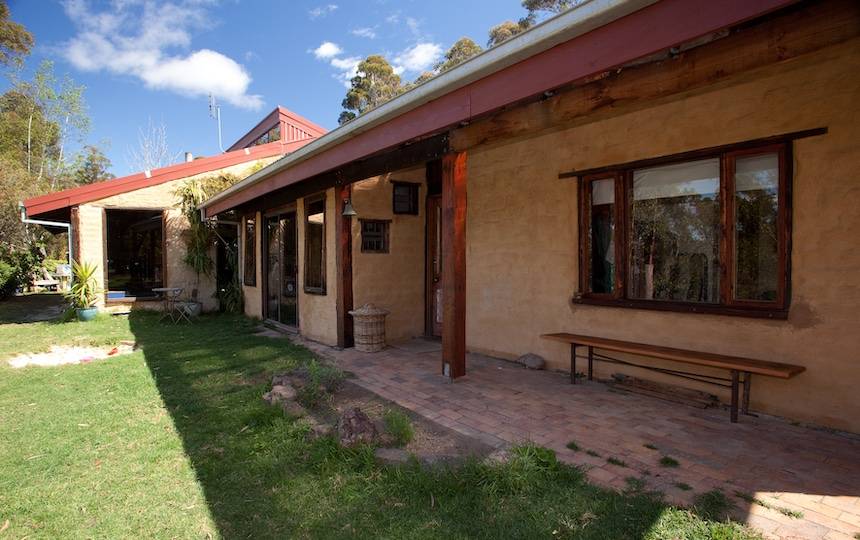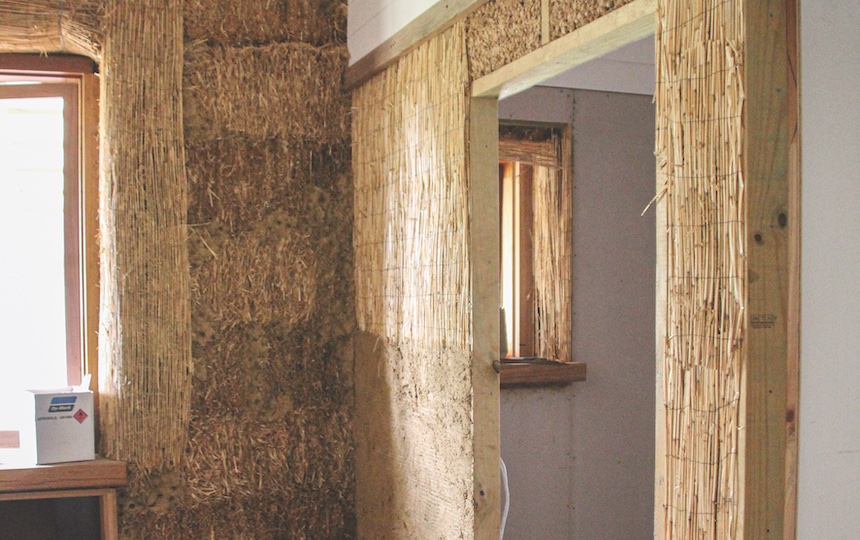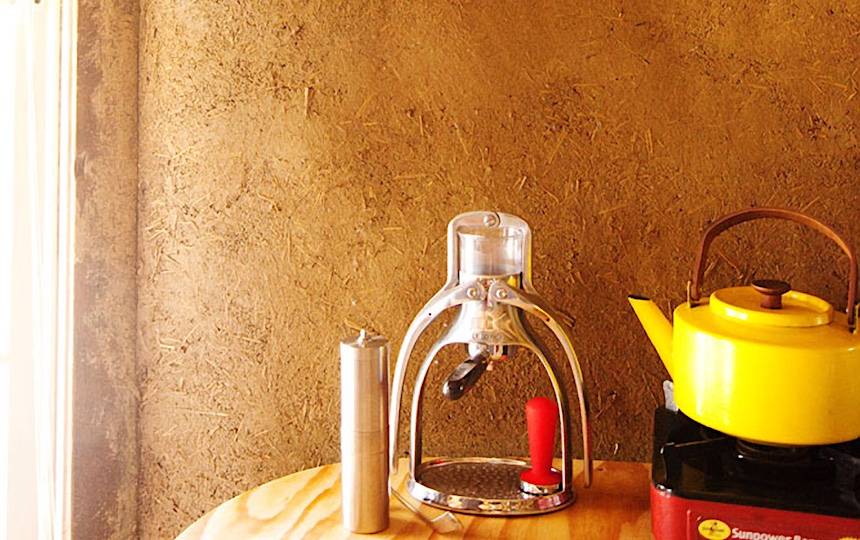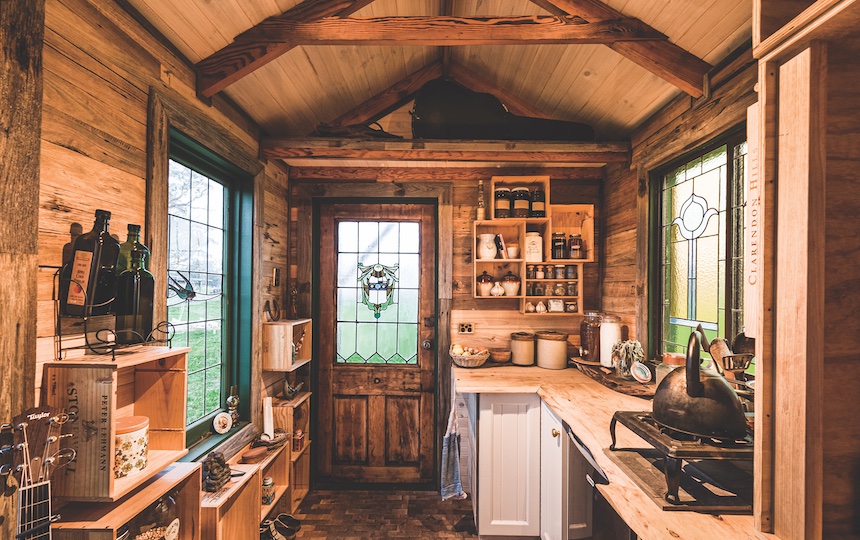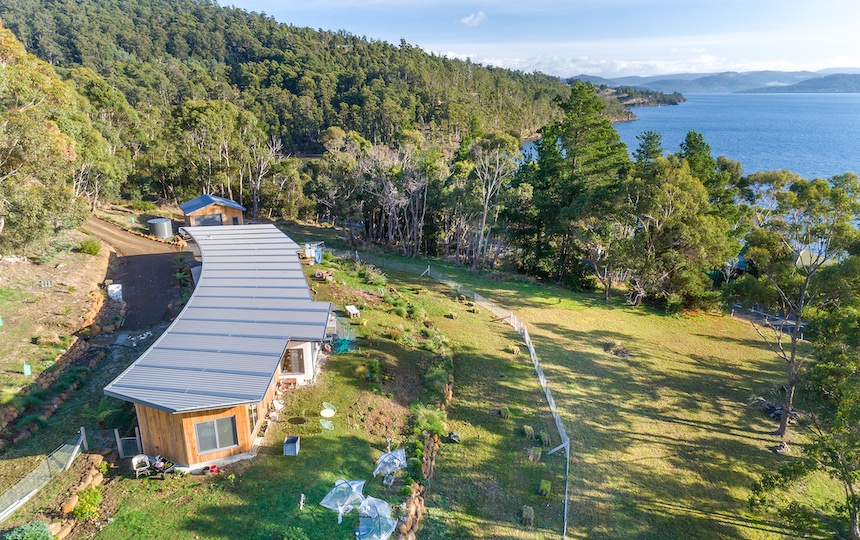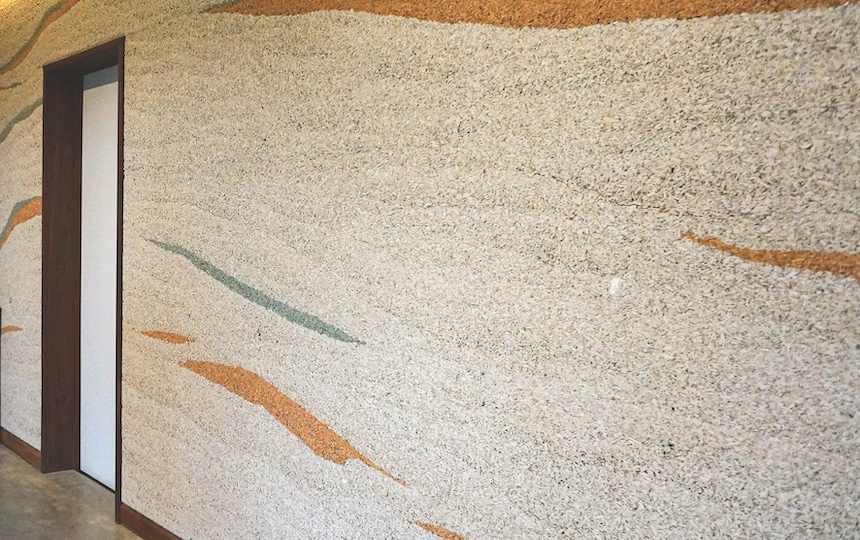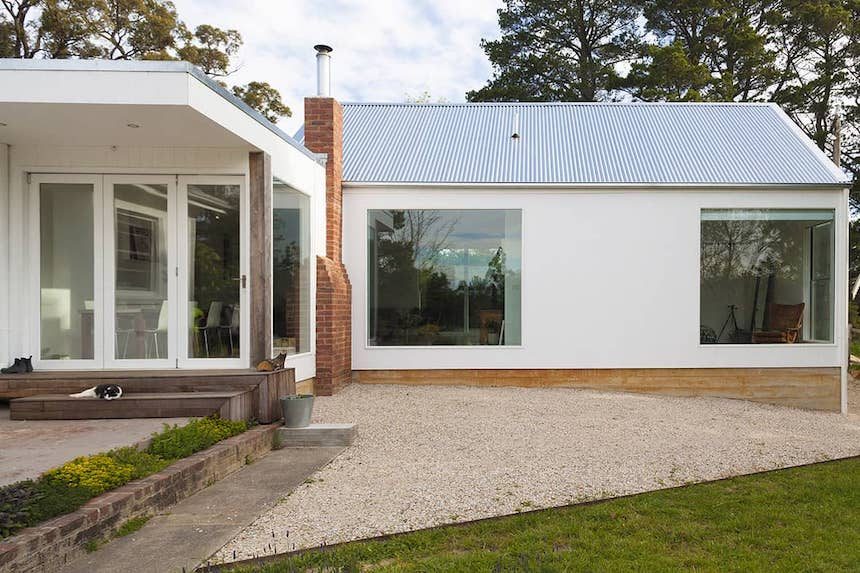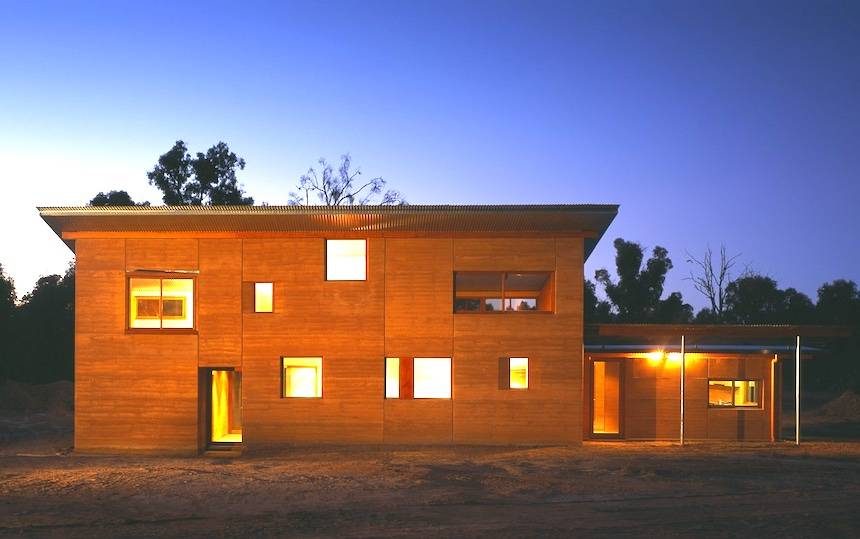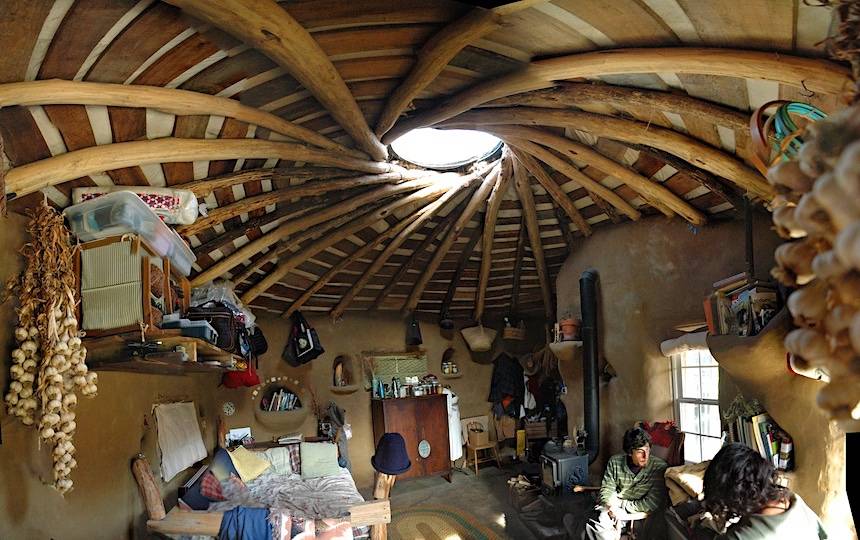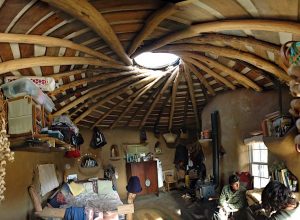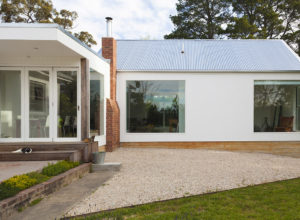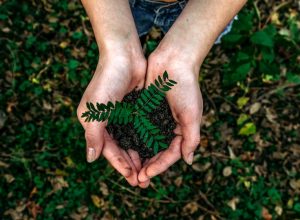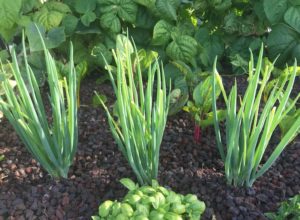Something exciting is happening for the natural building industry around Australia.
For anyone who has wanted to use natural materials to build their own home, whether that be for environmental benefits or cost, there is a new resource hub being developed which will make it easier to source information and resources, as well as being able to learn and connect with like-minded folk for support and advice.
Long-term natural builder Dr Rachel Goldlust saw a gap in the industry in her involvement as a member of the natural building community. It’s notoriously difficult to get accurate information and resources when building a home using natural materials, so Rachel created the Natural Building Australia to help others like her on their home-building journey. We spoke to her to find out more.
Can you tell us what Natural Building Australia is and what is its purpose?
Natural Building Australia is looking to be the first and only nation-wide website and in-person business for professionals and punters looking to get dirty and more hands on with their homes.
We can all see that as energy prices are rising, households are starting to think about ways to make their homes more efficient. Likewise, as house and land prices go up, more people are looking to take some of the expense out of their build by doing it themselves, and/or move rurally to live simpler and closer to nature.
City dwellers are asking for clever ways they can retrofit or renovate to make their homes more sustainable, and many are looking to natural building solutions but often find it too difficult or get told they can’t do what they know they want to!
Too often I hear that finding reliable information and being connected into the network is the hardest part of getting more people to think about building with natural and recycled materials, so this platform aims to address that issue and unite the many modalities under one roof.
Tell us about the website you are building and who is it for?
Currently there is no central directory, platform or events listing to help people find projects or workshops or even just reliable resources to help them get their project moving forward. There are strawbale groups, hemp associations and a lot of really small single-director businesses operating across the country. Much of the industry still operates at the margins and by word of mouth, and people working in the industry are too busy to spend time online getting the word out there.
Combining a directory of trades and skills, an interactive map of opportunities and events around the country, feature articles and webinars, courses and a resource hub, Natural Building Australia will be the one-stop-shop for building smarter and with alternative materials.
The website aims to attract both people looking to develop their own home/studio/bnb project and those working and supplying the industry, from designers to architects, solar installers, grey water specialists, surveyors, engineers, plasterers to volunteers looking to learn through on-site experiences. Basically anyone with an interest in or business dealing with natural building and its related industries.
What will it do for these people?
Natural Building Australia has three main aims. Firstly, to build up a central platform so people can find the resources or professionals they need to start their projects and feel supported to do so.
Secondly, to build up the industry so more people find out about it and more homes are built to work with the climates and seasons. With a growing materials shortage and carbon footprint problem, its never been more important.
And lastly, to unite the modalities so that those working in the margins can have a bigger platform to help inform building practices and codes, planning legislation, and basically have a voice. The industry has long been marginalised and small discreet groups have more of a chance of being heard if they band together.
Why is natural building so important as a way to build?
Indigenous Australians have long known the benefit of using natural materials and this is a whole area that white Australia has really not connected with as we came along and built our big hulking European dwellings that hardly work in any seasons, let alone the climates specific to different parts of the country.
Australia has a long and proud history of (modern) earth building, but this tradition has often been sidelined or forgotten in the rush towards easy and cheap housing solutions. In my other life, as an environmental historian, I have been researching the origins of earth building in Australia since the 1940s, at a time when we had a massive housing shortage and a lack of pre-fabricated materials.
The ‘muddies’ came from Eltham, just out of Melbourne, and banded together to build each others’ homes from the clay soil beneath their feet. They used found or scavenged materials, built smaller homes that worked with the seasons, and were built to last.
Providing a relatively easy way for people to gain some shelter, we have not lost the skills but we have lost the confidence that we can build our own homes, and that basic right is not out of our reach as we face yet another housing crisis. Bespoke housing is not always going to be cheap, but it does give people more autonomy to decide what they need, and how they can build what they can afford, and these choices are often lost as people are forced into big mortgages and/or contracts with builders who are often not responsive to what people actually want.
Not only does natural building work with the environment, having a much smaller footprint than conventional houses that are all shipped in from China in one way or another, but they build community and resilience – both things we need as we move further and further into a climate crisis and an unstable economic future.
What are some of the barriers natural builders face?
Making up just a small percentage of annual home builds, it’s clear there is a growing desire for less carbon-intensive building materials, but a few things are holding it back. Firstly, accessing information on earth building across Australia is hard and can be confusing or conflicting. Secondly, existing research is beginning to date, comes from overseas and often only represents one type of building modality. Thirdly, there isn’t a whole lot of data being undertaken to allow it to compete with conventional building practices. And lastly, there’s a whole industry now devoted to pseudo-green solutions that aren’t actually that sustainable when you think about using the earth beneath your feet!
People also feel that planning is a barrier, but it really isn’t once you’ve got the knowledge to communicate what you’re doing. It’s all been done before and precedent is a powerful agent when it comes to communicating with planning and building authorities. Natural homes are not illegal but you do have to know what you’re doing and communicate it with confidence. Natural Building Australia wants to give you those tools.
What are the benefits of natural building?
Natural Building is many things. Broadly speaking, it is use of natural and renewable materials to create shelter for ourselves: something humans have been doing for millions of years. Natural building helps us to connect to the ecosystems we are a part of and ask what resources are abundantly available around us for creating structures. It allows for endless creativity with the raw and minimally processed materials that nature provides. Each bioregion on earth has historically developed a building vernacular that was based upon available resources. The sky is the limit as you can build anything from natural materials.
Natural homes are breathable, maintain a stable temperature and often designed in conjunction with passive-solar design principles, which means they use less carbon-intensive energy and more natural energy from the sun, wind and cooling effects at night. They say that passive homes need active people, and its become abnormal to have to manage our own comfort other than just pushing a button.
Natural homes are also good for the soul. They are built with purpose, intention and love and often respond to the people living in them and the way their lives are structured. When you know how much energy goes into building a house, you’re going to build it smaller and to your physical and financial capacity. I think it’s important to think of a home as the thing that reflects you and your values. And it doesn’t have to be something bought off the shelf.
What are some of the problems the natural building industry is facing as a whole?
For generations, natural building has largely been the purview of owner builders. The restrictions and requirements are becoming slowly more restrictive as the years go by and as the construction industry builds its power in the building code and federal agency regulations.
There’s roughly 40k people annually who take out owner building permits or licenses, and this is dropping as people feel more removed from something that our grandfathers used to do on the weekends. The professionalisation of building has meant that more of us feel unqualified when really building as an occupation has only really happened in the last few generations. Before that, it was everyone’s duty to build shelter for themselves and their communities.
Logistically, the industry is also finding it difficult to squeeze what it knows as lived proof into the regulatory system as the national BASIX program (energy efficiency rating tool) does not recognise many natural materials for the thermal and construction capacities they are known for (eg the R value of straw in straw bale, or the capacity of thermal mass floors to operate as a heat sink). This is largely due to the lack of investment in developing the research and demonstrating the capacity of natural materials to work as well as pre-fabricated ones, and often many times better.
I hear so often that homes in the Northern Territory, for example, are only seen as ‘environmental’ if they put in a reverse-cycle air con and close all the windows, but not if they use passive ventilation methods – this is nuts! There is an ideological and a research issue at play that is holding this industry back from being economically competitive and demonstrating what these homes can do in a post-peak oil landscape.
How can the Natural Building Australia hub help solve these problems?
This sector would benefit from greater co-operation and co-ordination and, in order to generate an active and vital building community, it needs a responsive and relevant network hub and platform. Considering earth homes have been around since humans first began creating shelter, it’s time to give all modalities a bigger platform, help grow the industry and make it a legitimate and competitive part of the building and housing landscape.
This is the aim of NBA and once it has the support of the players in the industry, and can operate as a thriving hub, it can start to grow and look to help sponsor research or provide demonstration builds that can be used as test cases. It could also advocate for a TAFE course in natural building, examples of which are starting to pop up overseas.
All these things are possible once the network is thriving and demonstrating that it is here to stay, and will remain a vibrant part of the domestic housing trade.
To find out more about Natural Building Australia and sign up to be a member. Go to naturalbuildingaustralia.org



